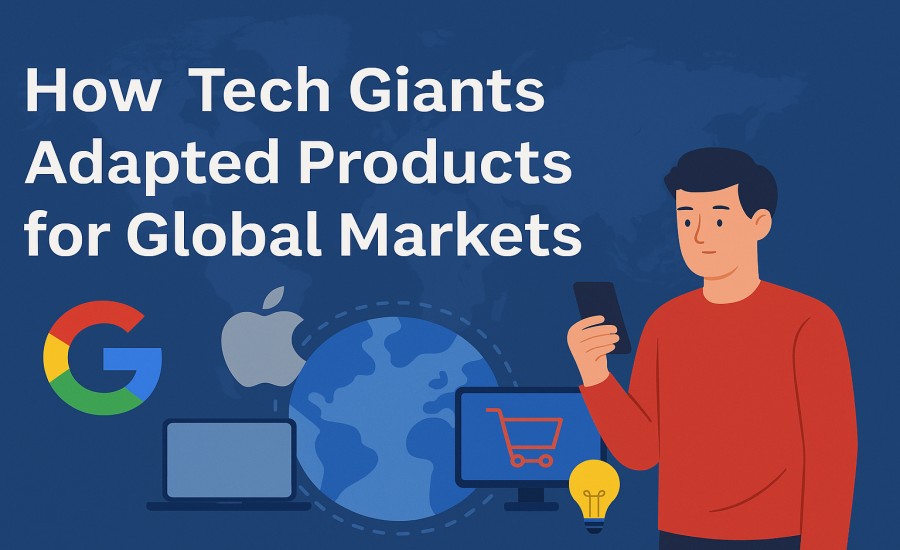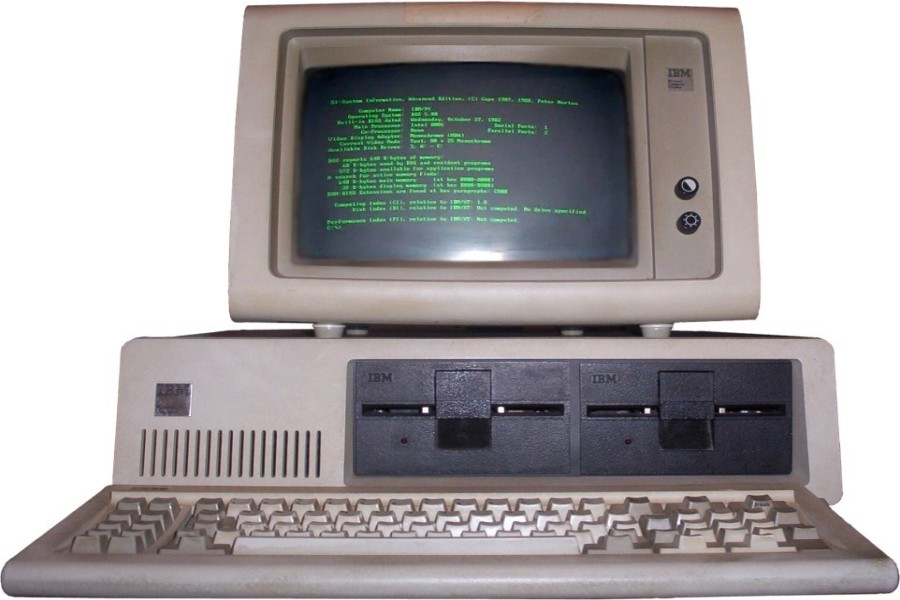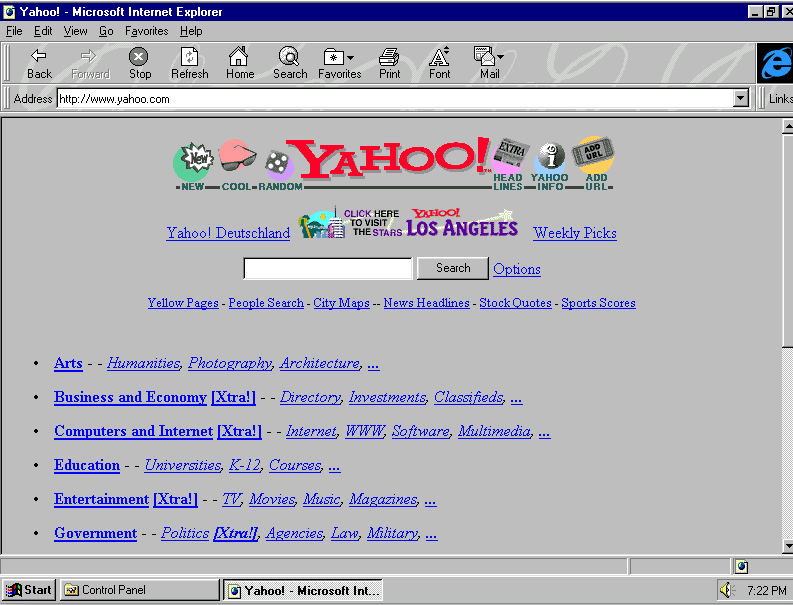
Picture this: It’s the late 1980s in Paris. You’ve just booted up a cutting-edge American word processor on your expensive new personal computer. Eagerly, you dive into the menus, only to be met with… English. Or worse, a bizarre, literal translation where “File” becomes “Lime” (a file tool) and “Save” becomes “Sauver” (to rescue). Tech giants like Apple, Google, and Samsung have mastered the art of global marketing by tailoring their products and strategies to meet diverse regional needs.
Dates are in MM/DD/YYYY format, the currency symbol is ‘$’, and error messages are utterly cryptic walls of English text. You feel frustrated, alienated. This powerful machine, designed for productivity, feels foreign and clumsy in your hands. This was the reality for many early international tech users – a world where software spoke only one language, and adapting was the user’s burden.
The Export Era (Late 1970s – Early 1990s): “One Size Fits All?”

In the dawn of personal computing and software, “going global” often meant simply shipping the American version overseas. Companies like IBM, Apple, and early Microsoft focused on hardware sales or operating systems designed primarily for their domestic market. International sales were often opportunistic, managed through distributors who might perform rudimentary translation, if any.
The core product remained unchanged. Documentation might get a basic translation, but the software itself – its interface, date formats, measurement units, character encoding (often limited ASCII) – was resolutely American. This approach stemmed from a belief that the technology itself was universal, and users would adapt. It also reflected the significant technical hurdles and costs associated with modifying complex software code back then.
Strategy Spotlight: The Direct Export & Distribution Model
- Approach: Sell the existing US product in international markets with minimal modification.
- Localization: Basic translation of manuals (sometimes), packaging adjustments. Software core rarely touched.
- Channel: Often relied on local distributors to handle sales, import, and basic support.
- Assumption: Technology transcends culture; users will adapt.
- Significance: Established initial international footholds but highlighted the limitations of a US-centric approach.
Milestone Markers
- Early 1980s: IBM PC and Apple II gain popularity internationally, largely in their original forms.
- Mid-1980s: Microsoft licenses MS-DOS and early Windows versions globally, often requiring hardware partners (OEMs) to handle localization.
- Late 1980s: Lotus 1-2-3 faces challenges in Europe due to delays in separating code from text for localization, allowing Microsoft Multiplan to gain ground. (Illustrates the cost of not adapting).
- Early 1990s: Recognition grows that basic translation isn’t sufficient for complex software usability.
Parallel Developments
- 1980s: Rise of global logistics networks (FedEx, DHL). Increasing globalization of business.
- 1989: Fall of the Berlin Wall opens Eastern European markets.
- Early 1990s: Emergence of the World Wide Web begins, although widespread access is years away.
User Experience Snapshot
Imagine wrestling with software designed for dollars and inches when you use francs and centimeters. Keyboard layouts don’t match, accented characters are impossible to type, and the software’s “logic” feels counterintuitive within your cultural context. It worked, mostly, but it felt like borrowing someone else’s tools rather than using something designed for you.
Price Point Perspective
Early imported tech was expensive everywhere due to manufacturing costs, shipping, import duties, and distributor markups. There was little concept of regional pricing based on purchasing power; direct currency conversion (often unfavorable) was the norm. This limited adoption primarily to businesses and affluent individuals.
What We Gained / What We Lost
- Gained: Initial access to transformative computing technology in various parts of the world. Foundations for future global expansion laid.
- Lost: Opportunities for faster adoption due to usability barriers. Potential user satisfaction and market share ceded due to lack of adaptation.
Unexpected Consequences
- The frustration with non-adapted software spurred demand for localization services, planting the seeds of a new industry.
- Early negative experiences could sometimes create long-term biases against certain brands in specific markets.
Industry Voice
“We built it, they’ll buy it. Maybe we’ll translate the box.” – (Hypothetical paraphrase reflecting the prevailing attitude of the era).
The Localization Awakening (Mid 1990s – Mid 2000s): “Beyond Translation”

The explosion of the World Wide Web and the launch of graphical operating systems like Windows 95 changed everything. Suddenly, software was more visual, more text-heavy, and potentially accessible to hundreds of millions globally.
The “one size fits all” approach clearly wouldn’t scale. Tech giants realized that true global reach required more than just translation – it required localization (L10n).
This era saw the rise of internationalization (i18n) – the practice of designing software from the ground up to support localization.
This meant separating text strings from code, allowing UI elements to resize for longer translations (German words are famously lengthy!), supporting different character sets (like Unicode), and enabling easy switching between date, time, number, and currency formats.
Microsoft made significant investments here with Windows, enabling a vast ecosystem of localized software. Early web portals like Yahoo! and AOL scrambled to create regional versions with translated content and relevant local links.
Strategy Spotlight: Internationalization (i18n) & Basic Localization (L10n)
- Approach: Design products with adaptability in mind (i18n), then translate and adapt basic elements for specific locales (L10n).
- Localization: Translation of UI text, help files; adaptation of date/time/currency formats; basic character set support (moving towards Unicode).
- Technology: Emergence of CAT (Computer-Assisted Translation) tools, early Translation Management Systems (TMS). Structured localization processes begin.
- Goal: Make the software usable and understandable in key international markets.
- Significance: Marked the shift from export to deliberate adaptation, enabling much wider software adoption globally.
Milestone Markers
- 1990s: Development and adoption of Unicode standard allows consistent encoding of most world languages.
- 1995: Windows 95 ships with built-in support for multiple languages and regional settings, a landmark i18n effort.
- Late 1990s: Web portals (Yahoo!, Lycos, Excite) launch numerous country-specific sites. Google begins indexing and providing results in multiple languages.
- Early 2000s: CAT tools and TMS platforms become more common, professionalizing the localization industry. First efforts to localize mobile phone interfaces (Nokia).
Parallel Developments
- Mid-1990s: Dot-com boom fuels internet expansion globally.
- Late 1990s: Emergence of e-commerce (Amazon, eBay).
- Early 2000s: Broadband internet starts replacing dial-up in developed countries.
User Experience Snapshot
Do you remember switching Windows to your native language for the first time? Or visiting a Yahoo! homepage filled with local news and links? It felt right. The software suddenly seemed less intimidating, more welcoming. While translations weren’t always perfect, and deep cultural nuances were often missed, usability improved dramatically. You could finally work with dates, numbers, and text in a familiar format.
[USER INTERFACE EVOLUTION SUGGESTION: Side-by-side screenshots of an English software UI and its German or Japanese localized version, highlighting text expansion differences.]
Price Point Perspective
While hardware remained relatively expensive globally, software pricing started seeing some regional variation, though often still tied closely to US prices. The rise of software piracy in some markets also influenced pricing strategies, sometimes leading to lower official prices to encourage legitimate sales.
What We Gained / What We Lost
- Gained: Massively improved usability for non-English speakers. Wider global software adoption. The birth of systematic i18n practices. Growth of the localization industry.
- Lost: The (relative) simplicity of single-language development. Increased complexity and cost in software design and testing.
Unexpected Consequences
- The need for robust i18n frameworks spurred innovations in software architecture and standards like Unicode.
- Enabled the global spread of open-source software, often localized rapidly by volunteer communities (e.g., GNOME).
Industry Voice
“It’s not enough to translate the words. We need to design the product so it can speak any language.” – (Representative quote reflecting the shift towards i18n thinking).
The Glocalization Wave (Mid 2000s – Late 2010s): “Thinking Global, Acting Local”
With the foundation of i18n laid, and the rise of mobile internet, social media, and streaming services, the next wave focused on deeper, more nuanced adaptation: Glocalization. This wasn’t just about making products usable; it was about making them culturally relevant and locally competitive. Tech giants realized that simply translating interfaces wasn’t enough to win hearts and minds (and wallets) in diverse global markets.
Netflix began commissioning original content in local languages (e.g., Sacred Games in India, Money Heist in Spain), which sometimes became global hits. Facebook developed Facebook Lite for regions with slow internet and basic smartphones.
Apple adjusted iPhone pricing and introduced installment plans in markets like India to match purchasing power. Google Maps incorporated local landmarks, transit systems, and even real-time traffic data specific to cities worldwide. Airbnb integrated local payment methods (like Alipay/WeChat Pay in China) and adapted its platform features. Uber famously changed the color of its car icons to red in China (symbolizing luck) and green tones in Ireland.
Strategy Spotlight: Glocalization (Deep Adaptation)
- Approach: Maintain a global brand and platform while deeply tailoring content, features, user experience, and business models to specific local markets.
- Localization: Beyond translation – includes culturally relevant content, imagery (like Netflix thumbnail A/B testing), local payment integration, adapting features for local infrastructure (e.g., low bandwidth), regional pricing.
- Focus: User resonance, market share growth in diverse regions, competing with local players.
- Technology: Sophisticated data analytics to understand local preferences, Content Delivery Networks (CDNs) for global performance, flexible platform architectures.
- Significance: Enabled hyper-growth in emerging markets and cemented tech giants’ global dominance by feeling more ‘local’.
Milestone Markers
- Mid-2000s: Google Maps launches, continuously adding highly localized data layers globally.
- 2007: Apple launches iPhone; App Store follows, enabling developers to set regional pricing.
- Late 2000s: Facebook surpasses MySpace globally, partly due to better localization and performance in diverse markets.
- Early 2010s: Netflix begins major international expansion, investing heavily in subtitling, dubbing, and eventually local original content.
- Mid-2010s: Rise of mobile-first strategies targeting emerging markets (e.g., Android Go Edition, Facebook Lite, YouTube Go). Airbnb intensifies localization, supporting 62 languages.
Parallel Developments
- Mid-2000s: YouTube launches, user-generated global content explodes.
- Late 2000s: Global smartphone adoption surges with iPhone and Android.
- Early 2010s: Cloud computing (AWS, Azure, GCP) provides global infrastructure backbone. Rise of mobile payments in Asia and Africa.
User Experience Snapshot
Remember discovering a Netflix show made in your own country, with actors and cultural references you recognized? Or finally being able to pay for an international service using your local bank transfer or mobile wallet? Booking an Uber where the app felt subtly tuned to your city? This era was about technology feeling less like an import and more like a part of your local digital landscape.
Price Point Perspective
This era saw the maturation of regional pricing strategies. Companies actively analyzed Purchasing Power Parity (PPP) and local competitive landscapes. Subscription services introduced tiered pricing (e.g., Netflix’s mobile-only plan in India). Freemium models allowed basic access globally, with paid tiers adapted to local willingness-to-pay. Apple began assembling iPhones in India partly to mitigate high import duties affecting final consumer prices.
What We Gained / What We Lost
- Gained: Products felt truly tailored and relevant globally. Massive user growth in emerging economies. Richer, more diverse content libraries. Locally competitive business models.
- Lost: Increased fragmentation of product offerings. Huge operational complexity managing regional variations. Potential dilution of a globally consistent brand message.
Unexpected Consequences
- The success of localized content (like K-dramas or Scandi-noir) created new global cultural phenomena.
- Deep local integration sometimes required uncomfortable compromises with local regulations or censorship demands.
- Strong local adaptation fueled the rise of sophisticated regional competitors (e.g., Grab vs. Uber in SE Asia).
Industry Voice
“To win globally, you have to win locally. That means understanding the culture, the infrastructure, the competition, and tailoring your product relentlessly.” – (Synthesized quote reflecting the glocalization mindset).
Navigating the Global Maze (Late 2010s – Present): “Complexity & Compliance”
Having achieved massive global scale, tech giants now operate in an environment of unprecedented complexity. The focus has shifted towards navigating a tangled web of regulations, geopolitical tensions, ethical considerations, and the intensifying challenge of content moderation across hundreds of cultures and languages.
Compliance with data privacy laws like Europe’s GDPR, California’s CCPA, or India’s proposed Digital Personal Data Protection Act requires significant engineering effort and careful handling of user data, often necessitating regional data centers (a core offering of AWS, Azure, GCP). Operating in countries like China means navigating censorship and strict government controls.
Content moderation faces the impossible task of balancing free expression with preventing harm across diverse cultural norms and legal frameworks, often relying heavily on AI with mixed results. AI is also being leveraged for increasingly sophisticated real-time translation and localization, as seen in platforms like Roblox connecting global players. Geopolitical flare-ups can instantly impact market access or supply chains.
Strategy Spotlight: Compliance, AI Adaptation & Geopolitical Navigation
- Approach: Maintain global operations while managing complex regional regulations, leveraging AI for scale, and navigating geopolitical risks.
- Localization: Increasingly focused on compliance (privacy policies, content standards), AI-driven translation/adaptation, ensuring platform resilience against regional disruptions.
- Focus: Risk management, regulatory adherence, maintaining user trust, operational efficiency via AI, adapting to geopolitical realities.
- Technology: AI/ML for translation, content moderation, personalization; globally distributed cloud infrastructure with regional compliance; sophisticated legal and policy teams.
- Significance: Represents the current frontier – maintaining global scale is now as much about navigating external complexities as it is about product features.
Milestone Markers
- 2018: GDPR takes effect in the EU, setting a global precedent for data privacy regulation.
- Late 2010s: Tech platforms face increasing scrutiny over content moderation, misinformation, and political influence globally.
- ~2020: Roblox implements real-time AI chat translation to connect its global user base.
- 2020s: Geopolitical tensions (US-China trade war, Russia-Ukraine conflict) impact tech supply chains and market access. Companies increase regional data center investments for data sovereignty compliance. AI plays a growing role in hyper-personalization and adaptive interfaces. Apple ramps up manufacturing in India and Vietnam to diversify from China amid tariff concerns and geopolitical risk.
Parallel Developments
- Late 2010s: Rise of TikTok as a global social media phenomenon originating outside the US.
- 2020: COVID-19 pandemic accelerates digital transformation and remote work globally.
- 2020s: Rapid advancements in generative AI impact content creation and translation. Increased focus on digital sovereignty by various nations.
User Experience Snapshot
You might notice more granular privacy settings, region-specific content warnings, or perhaps experience slightly different platform rules depending on your location. Behind the scenes, complex systems are working to ensure the service complies with local laws you may not even be aware of.
Sometimes, this maze results in features being unavailable in certain regions or content takedowns that seem arbitrary without understanding the local legal context. The seamlessness of the previous era is sometimes strained by these external pressures.
Price Point Perspective
Pricing remains regionally adapted, but global economic factors (inflation, currency fluctuations) and geopolitical events (tariffs, sanctions) add layers of complexity. Companies like Apple have shown willingness to rapidly shift logistics (e.g., air-freighting iPhones from India) to mitigate tariff impacts and maintain regional pricing structures, highlighting the strategic importance and complexity of global pricing.
What We Gained / What We Lost
- Gained: Increased user data protection (in some regions), more responsible (though still imperfect) content moderation efforts, greater awareness of tech’s societal impact. Platforms built on resilient, globally distributed infrastructure.
- Lost: Potential for a truly “borderless” internet feels diminished. Users may face fragmented experiences or feature limitations due to regulation. Companies face immense compliance costs and navigate ethical tightropes.
Unexpected Consequences
- Regulatory differences are creating a “splinternet” effect, where the online experience differs significantly by region.
- The sheer complexity of global compliance and content moderation has become a competitive moat, favoring the largest platforms with vast resources.
- Tech platforms are increasingly drawn into geopolitical disputes.
Industry Voice
“Going global used to be about code and culture. Now it’s code, culture, compliance, and geopolitics. The challenge is exponentially harder.” – (Representative quote from a modern global tech executive).
Full Circle Reflections
From the naive “export anything” approach of the early days to the hyper-complex, regulation-bound global operations of today, the journey of tech adaptation has been extraordinary. The initial dream of simply shipping American innovation worldwide quickly met the messy reality of linguistic, cultural, economic, and legal diversity.
Tech giants learned – sometimes painfully – that success required not just translation, but deep empathy for local context (L10n), designing for adaptability (i18n), and blending global scale with local relevance (glocalization).
The early user frustration with awkward interfaces has been replaced by the expectation of seamless, personalized, and culturally attuned digital experiences. Yet, this very success has created new challenges: navigating a minefield of global regulations, managing content across diverse norms, and grappling with the immense power these platforms wield across borders.
The Heritage Impact: Shaping the Digital World
The relentless drive to adapt products for global markets has profoundly shaped:
- Software Engineering: Forced the development of i18n best practices, Unicode adoption, and flexible, modular architectures.
- Global Communication: Fueled advancements in machine translation and enabled cross-lingual interactions on platforms like Facebook, Roblox, and beyond.
- Digital Culture: Both spread global trends (via Netflix, YouTube, TikTok) and fostered local digital ecosystems through regional content and platform adaptation.
- International Business: Created new industries (localization services) and required companies across sectors to develop global digital strategies.
- Geopolitics & Regulation: Made tech platforms key players on the world stage, subject to intense scrutiny and national regulations concerning data, content, and competition.
The quest for global adaptation is far from over. As technologies like AI and immersive reality evolve, tech giants will face new frontiers in tailoring experiences across an increasingly complex and interconnected – yet also fragmented – world. The balance between global ambition and local sensitivity remains the core challenge.
FAQ: Tech Product Adaptation Explained
- What’s the difference between internationalization (i18n) and localization (L10n)?
Internationalization (i18n) is designing a product (like software) from the start so it can be easily adapted to various languages and regions without needing fundamental code changes. Localization (L10n) is the actual process of adapting that product for a specific locale, including translating text, adjusting date/currency formats, changing imagery, and respecting cultural norms. Think of i18n as building a house with standardized wiring and plumbing, and L10n as installing the specific fixtures and decor for someone living there. - Why do apps or websites sometimes look or work differently in other countries?
This is due to localization and glocalization. Companies adapt UIs (like Uber changing car colors), features (Facebook Lite for low bandwidth), content (Netflix regional shows), payment options (Airbnb accepting WeChat Pay), and pricing to better suit local user preferences, cultural norms, regulations, and economic conditions. - What are the biggest challenges tech companies face when adapting products globally?
Key challenges include: understanding deep cultural nuances, navigating complex and varied legal/regulatory requirements (like GDPR or censorship laws), managing the high costs and complexity of localization, ensuring brand consistency across markets, dealing with diverse technical infrastructure (internet speeds, device types), and managing content moderation across different cultural standards. Geopolitical risks and local competition are also major factors. - Which companies are known for successful global product adaptation?
Many tech giants have strong adaptation strategies. Examples often cited include: Netflix (regional content, UI personalization), Coca-Cola (marketing campaigns like ‘Share a Coke’), Airbnb (language support, local payment integration), McDonald’s (menu localization), Microsoft (long history of Windows/Office localization), Google (search results, Maps data), and Apple (regional pricing, retail experience). Success often involves continuous learning and deep investment in understanding local markets.
How has AI changed global product adaptation? AI is significantly impacting adaptation by: enabling much faster and more sophisticated machine translation (like Roblox’s real-time chat translation), powering hyper-personalized user experiences based on local data, automating aspects of content moderation (though human oversight remains crucial), and potentially helping to identify culturally specific user needs through data analysis.






